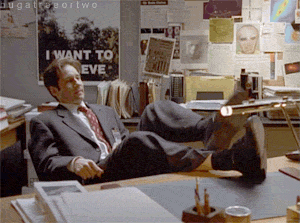Every time a media critic insists that print’s not dead, he or she inadvertently ends up making the opposite case. Just look at the latest cover feature for Port magazine, a London-based men’s lifestyle publication. In it, reporter Matt Haber rattles off some bleak stats about declining subscription rates and ad revenues, then arrives at this thesis: “Currently, magazines are enjoying something of a renaissance, not so much in advertising and circulation as in editorial vitality and cultural clout.” To which I say, in Internet-speak, O RLY?
Now, I love print magazines. I’ve spent most of my career editing them. But I am under no illusions: If print’s not dead, then it’s certainly in hospice care. A 2010 report by mediaIDEAS claims that “digital will go from representing 10 percent in 2009 to representing 58 percent of the magazine industry in 2020, and, conversely, print will go from representing more than 75 percent of the market’s value in 2008, to less than one third by 2020.” So my jaw dropped when I read this assessment in Port from Vanity Fair‘s Graydon Carter, one of six white, male editors in chief Port selected to represent this vibrant “golden age” of magazines:
A magazine is a brilliant invention. You take the best things you can find from around the world, you put together great stories, great photography and you give it to the consumers for $5. They can pass it on to somebody else; they can recycle it. If they lose it, they can buy another one. It’s available everywhere, and we’ll send it to their door for even less. That’s a pretty good deal. Magazines are a very viable part of our lives and will be for as long as people are alive.

Yikes. But from the consumer’s point of view, by which measure does digital media not win? The Internet offers access to many more “best things” from far wider corners of the world. The reading experience doesn’t cost a paltry $5; it’s usually free. Articles don’t arrive at the readers’ door, they arrive in their pocket–just a few clicks away when they want to read it, but not weighing them down. They don’t have to worry about recycling it or buying another one–and if they want to reread an article, they can Google it.
Many of the article’s arguments for magazines’ ongoing relevance involve aspects of journalism that are not print-exclusive: storytelling, curated reading experiences, engaging audiences as an intellectual community. If the Port feature were truly, as billed, “an unsentimental look at magazines in 2013,” it would acknowledge that while, at present, print media is indeed better equipped to finance deeply reported pieces like Lawrence Wright’s Scientology investigation, that has nothing to do with print per se, and everything to do with how nostalgia and legacy shape media budgets. Editors are no longer shuttled around Manhattan in town cars, which Haber uses as anecdotal evidence of how magazines have tightened their belts. But clearly the there’s no reason that the exhaustive fact-checking of Wright’s feature had to be performed from a 20th-floor office in Times Square, some of the most expensive real estate in the country. And there’s no case to be made that Wright’s excellent piece had more impact on the world because it appeared in print first and then online, rather than digitally only.

Port is wrong about print. The magazine sensibility, however, has won. “If you had to talk about what people want to read online, it’s much closer to magazines than to newspapers,” I told Haber in the piece. “Point of view matters. A highbrow/lowbrow blend. Innovative ways of talking about stuff. The things good magazines are built on is what the Web values.” This seems like a good place to note that I have the dubious honor of being the lone woman quoted in this piece. (For an exhaustive list of women editors Port could have interviewed and profiled, see the #WomenEdsWeLove hashtag.)
Despite the self-negating optimism these dudeitors express about the future of print, I remain thrilled to be working in magazines at this moment in time. Just because print’s dying doesn’t mean that magazines are. As New York‘s Adam Moss tells Haber, in print his magazine reaches 400,000 people. Coupled with the Web, it reaches 15 million. (Full disclosure: I am a columnist for New York magazine’s website.) “Magazines actually have bigger and more engaged audiences than we’ve ever had before,” Moss says. Right. Precisely because they’ve moved beyond print.
Ann Friedman is a magazine editor who loves the internet. She lives in Los Angeles
